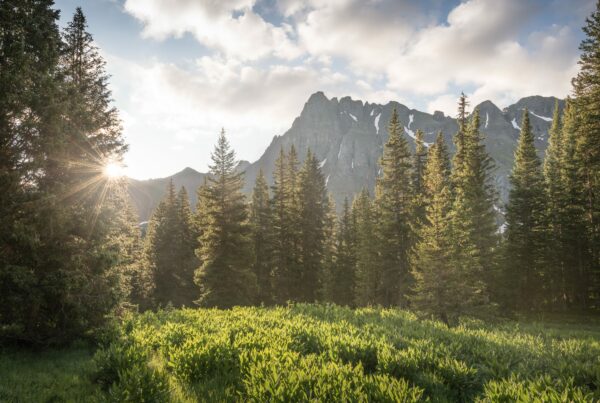FOR IMMEDIATE RELEASE: October 21, 2022
A Federal District Court Thursday once again rejected plans by the would-be developers of the Village at Wolf Creek to gain access across national forest lands for the ill-conceived project. Senior Federal Judge Christine M. Arguello invalidated the Rio Grande National Forest’s approval from 2019 that granted an access road across the National Forest in order to facilitate development of the massive real estate development proposed atop Wolf Creek Pass. The Court’s order was issued in response to a lawsuit filed by Rocky Mountain Wild, San Luis Valley Ecosystem Council, San Juan Citizens Alliance, and Wilderness Workshop.
“This is tremendously good news for anyone who values the remote character of Wolf Creek Pass,” said Mark Pearson, Executive Director at San Juan Citizens Alliance. “We’ve never seen an honest evaluation of the environmental impacts of constructing a city of 8,000 people at over 10,000 feet atop one of snowiest locations in Colorado, probably because the impacts if revealed would be staggering.”
For decades, Texas developer B.J. “Red” McCombs has pursued his vision for a city of 8,000 people at the top of Wolf Creek Pass. This massive development would be roughly the population of Aspen. The Leavell-McCombs Joint Venture obtained ownership of 300 acres of national forest land via a land exchange in 1986, one originally rejected by the Forest Service until political pressure overruled the common-sense denial. The parcel was originally obtained based on a represented development plan of around 200 units. A seasonal national forest road provides access to the inholding from Highway160 for reasonable use and enjoyment. However, the developer quickly changed its plan to 1,700 housing units and large-scale commercial development which led them to pursue unlimited access.
Wolf Creek Pass, 20 miles from the nearest town, is a remote landscape with a low-key ski area, and little nighttime traffic. Construction of the Village at Wolf Creek would dramatically impact the entire region, disrupting key movement corridors and habitat for threatened lynx, drastically increasing traffic, and irrevocably changing the character of the separately owned Wolf Creek Ski Area.
Community groups have waged unrelenting opposition to the development for 20 years, repeatedly scoring legal victories against the Forest Service, which continually approved various schemes to authorize the development. Most recently, in 2019 the Forest Service approved an access road in closed-door meetings with the developer. In doing so, it relied on the exact same Environmental Impact Statement that was rejected by Senior Federal Judge Richard Matsch in a 2017 ruling that
invalidated a land exchange previously proposed in 2015 between the Forest Service and the developers.
The Forest Service’s reliance on the rejected 2015 Environmental Impact Statement for its 2019 road access decision was the basis for Thursday’s court decision. “Thus, USFS frustrated the purpose of NEPA by continuing to rely upon an uninformed FEIS to issue the 2019 ROD,” the Court concluded.
“The ruling once again confirms the failure by the Forest Service to appropriately follow the National Environmental Policy Act and rigorously assess the true consequences of this inappropriate development,” said Travis Stills, an attorney with Energy & Conservation Law representing the conservation groups. “The order also recognizes the internal debate among staff of the Forest Service and Fish and Wildlife Service about how to lawfully implement their environmental mandates.”
The history of development efforts by the Village at Wolf Creek span at least 20 years, dating to an environmental review process that began in 2002. The Forest Service’s review has been marked by numerous lawsuits aimed at gaining transparency for the public about the project’s impacts.
“We are still waiting for the Forest Service, U.S. Fish and Wildlife Service, and other federal agencies to conduct an open, transparent and inclusive analysis of the environmental impacts associated with this enormous commercial development,” said Matt Sandler, Legal Director with Rocky Mountain Wild, also representing the conservation groups. “The Court’s ruling is a huge win for the wildlife and wildlands of Wolf Creek Pass.”
Opponents view the idea of a city atop Wolf Creek Pass as an absurdly bad idea, far from any public services and emergency responders, lacking an adequate water supply or electricity sources, severing important wildlife corridors, ignoring the consequences of vastly increased traffic, and discounting the real health impacts to thousands of visitors from sea-level trying to sleep above 10,000 feet.
“This is such a critical decision for the health of the Rio Grande headwaters,” says Christine Canaly, Director of the San Luis Valley Ecosystem Council, “The Wolf Creek area simply cannot handle anymore large scale development pressure. The river’s water delivery obligations must focus on the needs of the basin. Perhaps climate reality and this vital legal decision will stimulate much-needed sobriety to the Leavell-McCombs Joint Venture team and we can finally come together to align goals that embrace this living landscape.”
The groups pledged continued scrutiny of any further attempts to resuscitate the failed proposal and continued insistence on the Forest Service’s compliance with its legal obligations.
Contacts
• Travis Stills, Attorney, Energy & Conservancy Law, stills@eclawoffice.org, (970) 375-9231
• Matt Sandler, Legal Director, Rocky Mountain Wild, matt@rockymountainwild.org, (303) 579-5162
• Christine Canaly, Director, San Luis Valley Ecosystem Council, info@slvec.org, (719) 256-4758
• Mark Pearson, Executive Director, San Juan Citizens Alliance, mark@sanjuancitizens.org, (406) 599- 2008




Now is the time for Red and his family to think of their legacy and to deed the Wolf Creek Pass property over to perpetual conservation for the enjoyment and health of present and future generations of wildlife and the public. Why be remembered as villains?